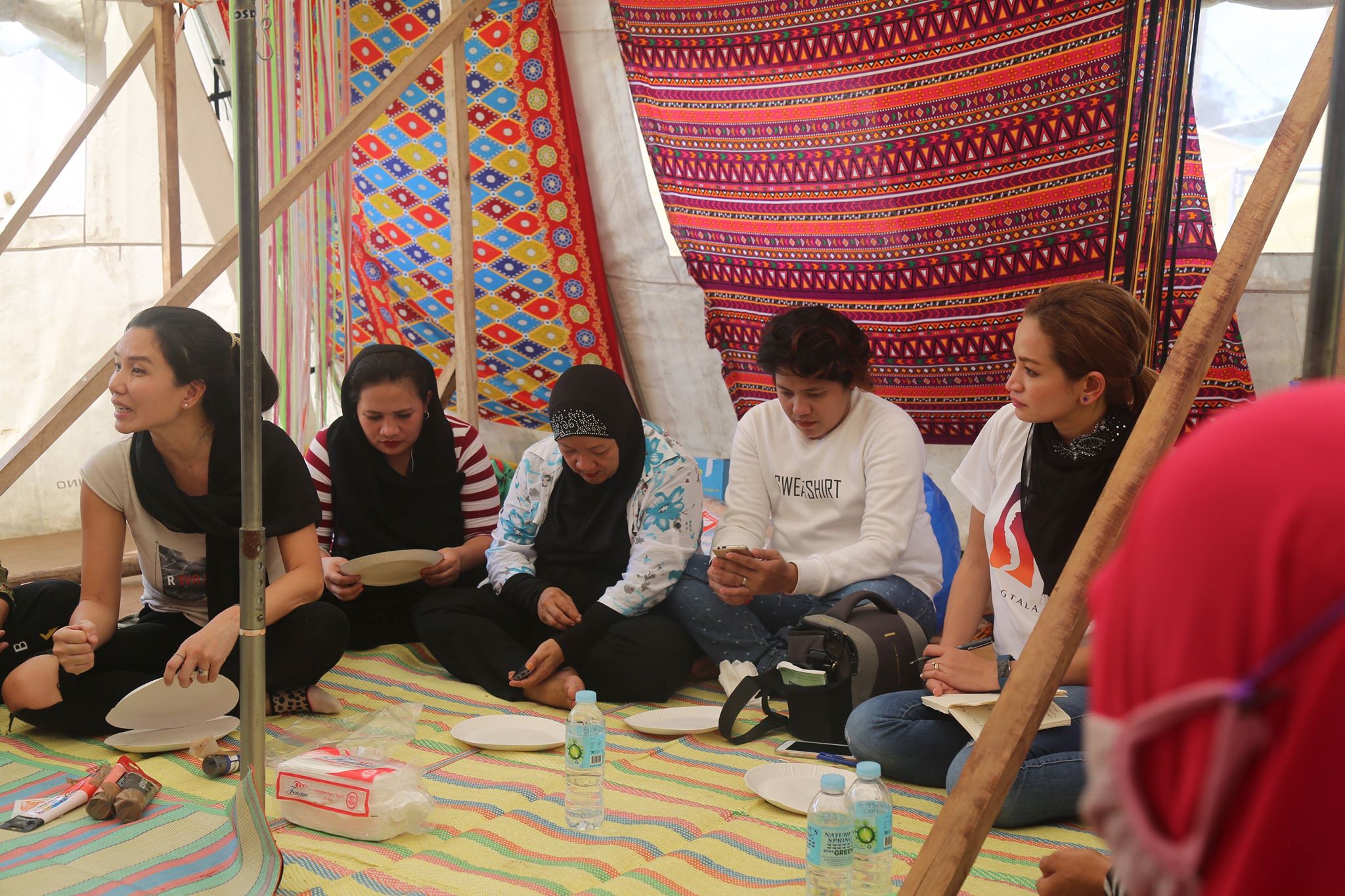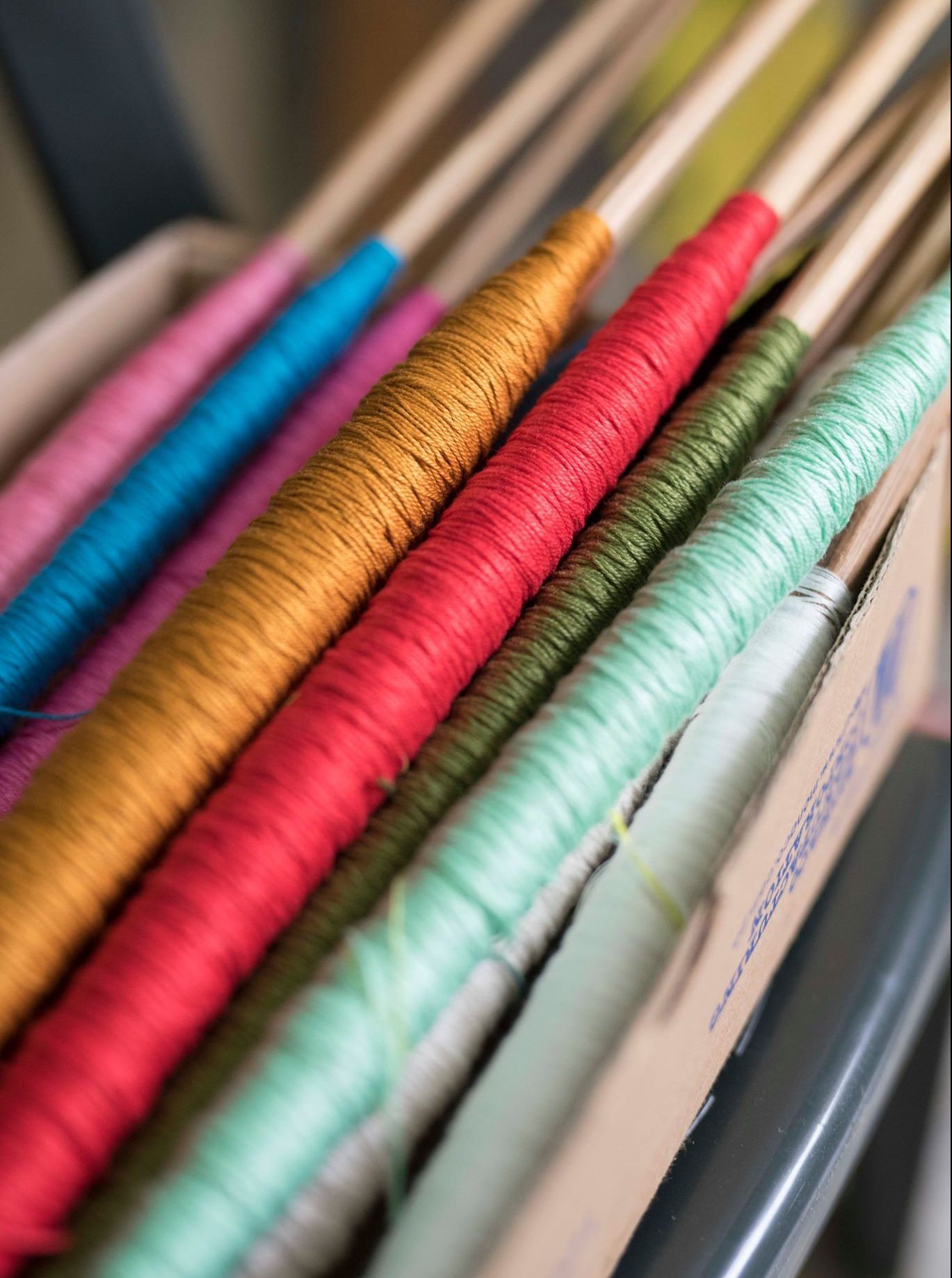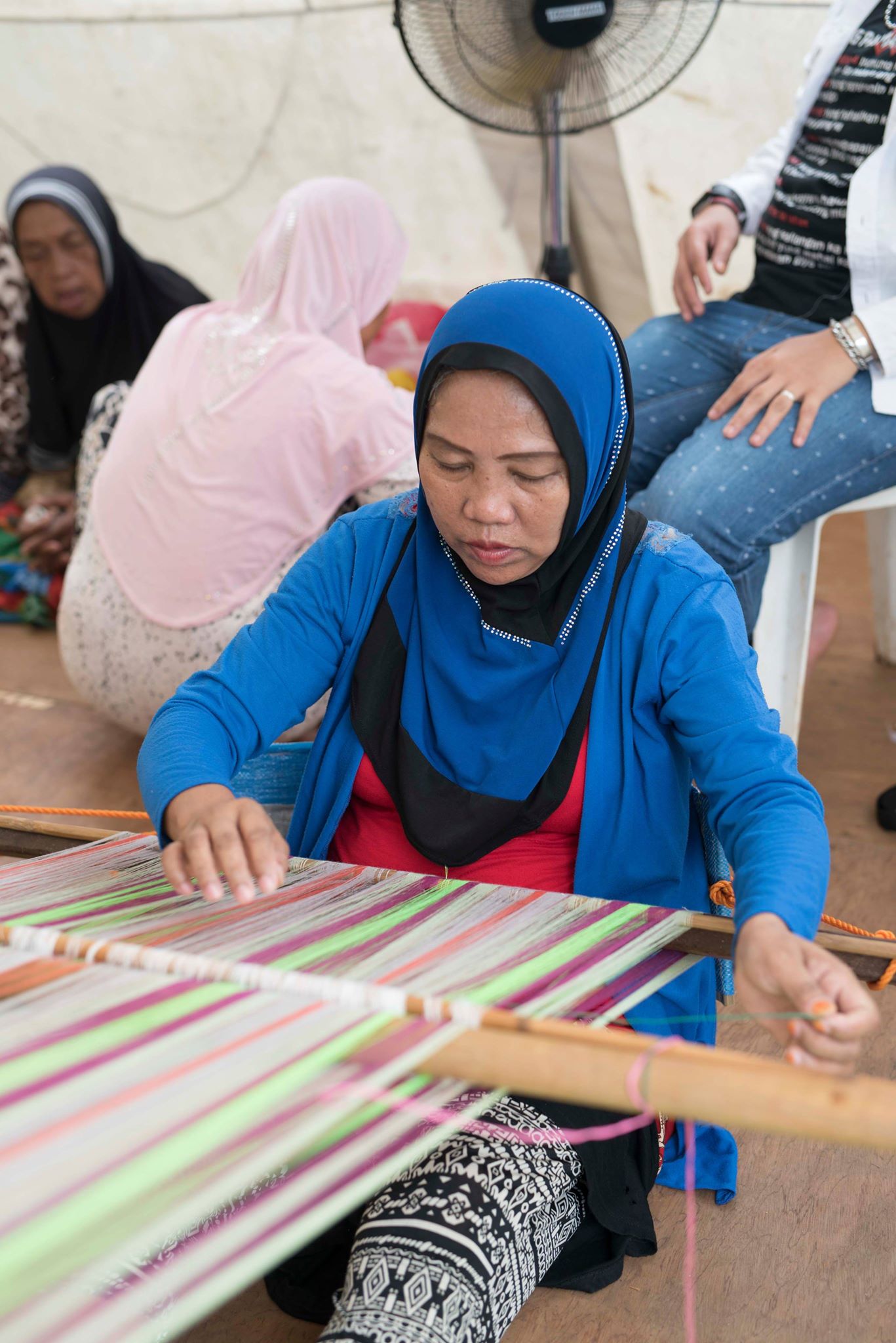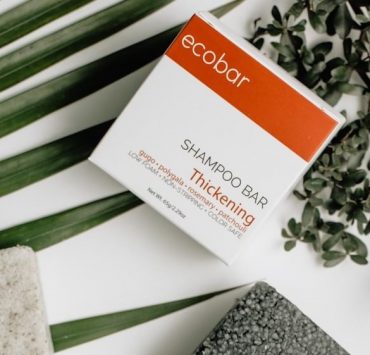Weaving is deeply embedded in the rich culture of the Maranaos. In many homes, the loom is a significant fixture. When the husband leaves, the wife takes her loom. She weaves intricately designed textiles in between caring for her children and accomplishing her other responsibilities. “It’s the perfect way for them to continue working within the confines of their home,” journalist Jamela Alindogan says.
When the war broke out in Marawi in 2017, the malong played a significant role. “A malong is not just a malong to them. In an evacuation center, that’s their blanket, that’s their cradle for their children, that’s what they use to change, that’s their tabing to another group or family. During an evacuation or an emergency, they lay it out and that’s where they put and pack all their most precious belongings and they sling it on their shoulders and run away,” Alindogan says. “That’s why Sinagtala gave a lot of malong to women because it provides comfort.”

Alindogan co-founded Sinagtala, a nonprofit organization that provides aid relief to conflict zones in Mindanao. With a primary goal of helping children, the organization has focused on putting up toy libraries in Mindanao in the last three years. During the siege, Sinagtala also established seven toy libraries in Marawi.
In one of her interviews in an evacuation center, Alindogan came across displaced weavers. At first, her only intention was to provide looms for these women but then, she felt the need to provide a safe place for them. “Sinagtala, as a place, binds women and people in a community together. It’s a refuge,” Alindogan says. However, the goal behind the weaving facility goes deeper. “When you provide help, you need to ensure that this is woven to the redevelopment and rebuilding of their sense of identity. In a way help them regain their dignity as a Muslim, as a Bangsamoro, and as a woman.”
Rebuilding women through weaving
“Bombs were falling 500 meters or one kilometer away from where we were. We could see it outside the window,” Alindogan says of the situation when they opened their first weaving center at the height of the siege in July. Turmoil surrounded these displaced weavers. And inside them, there is grief.
“It was very hard at first, because they couldn’t see weaving as a possibility of easing or improving their situation. The very basic, at the time, was still security, safety, their missing loved ones, food, and a safe space to sleep in,” Alindogan says. “When you’re in a situation where you lost everything, it’s hard to be positive. We’re talking about people who are traumatized. We’re talking about someone who lost all their belongings. We’re talking about a weaver who’s saved so much for many years of a dowry for her son only to go back home to find the dowry has been stolen by looters.”


Soon, they learned to pull their looms up and to distract themselves from their tumultuous circumstances through the act of weaving. They played beautiful music, put on lipstick, took their looms, and channeled their pain into vibrant textiles. “They particularly love green because it’s the color of Islam,” Alindogan observes. They weaved shades of blue, red, yellow, green, white, and earthy colors together. However, they refused to weave with black. “They didn’t want to weave black because it’s the color of Maute,” Alindogan says.
“During one of our art therapy sessions, Nikki [Luna] was telling them that this doesn’t define you. The Mautes are not the Maranaos. We encouraged them to retake that narrative and say that it’s one chapter of the Maranao history. It’s painful, but it won’t define history. It won’t define their art and sense of self-expression,” Alindogan says.
The textile they create is not just simply a product of their back-breaking weaving process, but it’s also emotionally taxing. As Alindogan puts it, “you don’t know the amount of pain and love that go into the weaves—it’s grief and love woven ferociously.”

The power of women
When we imagine empowered women, we picture women standing tall like Liberty in Eugène Delacroix’s “Liberty Leading the People,” the fierce Gabriela Silang, and the lone woman general Agueda Kahabagan poised for battle. Their stance is a depiction of power and bravery. The posture a woman assumes when she weaves does not display the same vehemence.
Their stance is a symbol of recovery and of respite, but it also evokes unwavering strength and growing courage.
“Weaving is deeply personal to a woman,” Alindogan says. When a woman weaves, she sits on the floor with legs extended beneath the unfinished textile. The backstrap hugs her by the waist to support her lower back. As she weaves, the progress unfolds right in front of her as if she gives birth. But her posture is also significant in child-rearing like an afternoon of running her fingers through her daughter’s hair or an evening of lulling her son to sleep. Then, she also takes a similar position to console her husband. In this pose, she allows her strength to flow towards her beloved. She gives fervently, but it’s also this act of sharing that builds her.
“[Our society] is patriarchal, but women lead. And silently,” Alindogan says. “They silently put up with [the hardships], they silently survive. The burden of having to care for children falls on women all the time. To improve a situation within a family, very quickly, you have to look at the situation of women and children not just because they are the most vulnerable, but because women rock the cradle that holds the world.” True to the organization’s name, they are the starlight of their homes, their community, and the world.

“You have to look at the situation of women and children not just because they are the most vulnerable, but because women rock the cradle that holds the world.”
“I find the collective power of women hasn’t been fully harnessed. We need to see the potential of women. There is a collective power to work together and support each other,” she adds. And this is what Sinagtala is exactly doing in Marawi now.
Although the war is over, the weavers, the women, and Marawi as a whole are still in the process of regaining their dignity. “Hunger persists in those communities. Many are able to return but only temporarily and majority remain displaced in evacuation centers. So, it’s really very hard to convince them that this is temporary, and this is healing,” Alindogan says. But Alindogan and her Sinagtala co-founders aren’t alone now.
In January 2018, Sinagtala has established another weaving facility with a toy library next to it in Balo-I, Lanao del Norte. Alindogan says this town holds the largest number of evacuees. In this weaving center, the women who have restored their hope are now Sinagtala’s allies in inspiring and rebuilding their communities.
“When you meet the weavers, you’ll realize that even if they’re in that situation, their power, strength, and potential to improve other people’s lives are already very strong. You just need to uplift a person enough to gain confidence, so they can pull another person up. Little by little, we keep pulling each other up,” Alindogan says.
“It takes a while,” Alindogan says. “[But] no one else can do it. No one has the capacity to do it but the women.”
Visit Sinagtala PH to support Maranao weavers.




